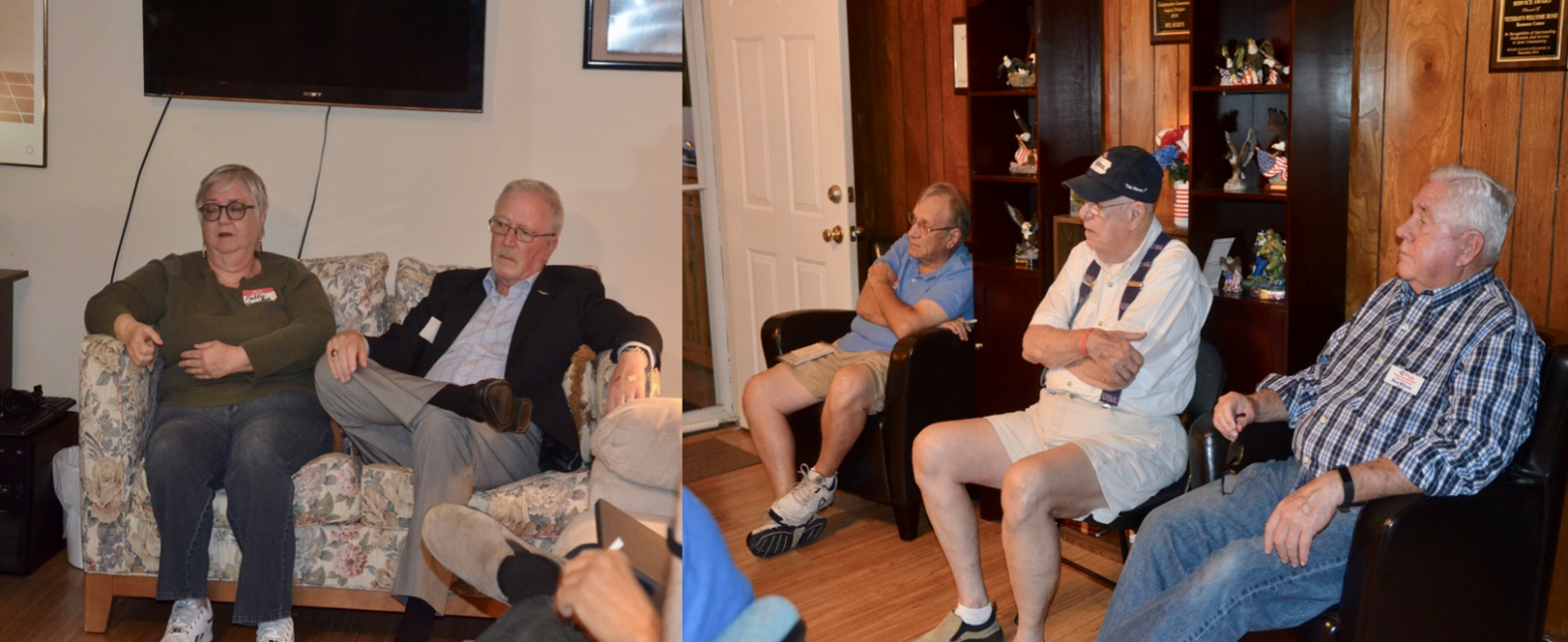By Steve Hamelman
Give credit to Benjamin Ryan Tillman, Jr., for one thing. As Governor (1890-1894) and then United States Senator from South Carolina (1895-1918), he never tried to hide his total commitment to white supremacy. In fact, he reveled in it.
So did his supporters.
For nearly 30 years as the Palmetto State’s most powerful man, Tillman put his racist worldview into practice through both word and deed.
In his younger years as an upstate farmer, he served in a local militia, taking part (and later, at campaign rallies, bragging about it) in murderous attacks on “Negroes” (so called in that era), who in his mind were a sub-level form of human being.
In his journey to the Statehouse, he participated in ballot-box fraud with a combination of bravado and intimidation the likes of which our very own Donald Trump couldn’t match.
As Governor, Tillman, though bound by his office to outlaw lynching, oversaw a state of terror where the number of African-American victims of mob “justice” reached record heights.
As Senator he incited his base—poor white farmers who viewed him as their savior—with sneering, insult-laden hate speech consistent with his nickname “Pitchfork”—that is, a farmer-turned-politician prone to jabbing opponents with barbed words.
Those curious about this outlandish figure will find in the biographies of him details of bullying, lying, defrauding, dividing, demeaning, and corrupting civil discourse and behavior. He even found time to exchange blows with a rival in Senate chambers.
And yet . . . and yet . . . a statue commemorating this paragon of Southern racism has been standing on the Statehouse lawn in Columbia since 1940.
Apparently, state leaders, clinging to the wrong side of history, have not yet thought it necessary to eliminate this blemish from the grounds of the state capitol.
Until Now, Perhaps
A well-planned movement is afoot to bring these leaders up to speed. Called “Take Tillman Down,” the anonymous people behind the effort have organized a rally to take place in Columbia on Saturday, February 27, from 11:00 am to 2:00 pm.
Their website presents four elegant one-screen pages: The Goal, The History, The Plan, and Get Involved.
The simple, clean, and well-illustrated information, with links to supplementary resources, takes a reasoned approach to a long-festering question: why are our representatives, abetted by the South Carolina Heritage Act passed in 2000, loth to accept the fact that while the rest of the world is moving forward, this state stagnates in an ignominious past?
One thing the website curators ask is that we educate those unfamiliar with Tillman’s career. That is what this writer will now do.
The Historians Speak
The negative view of Benjamin Tillman presented above is not a partisan one. It is an objective fact, grounded in scholarship, that Benjamin Tillman embodied the worst of the post-Civil War South.
In The South Carolina Encyclopedia Guide to the Governors of South Carolina (University of South Carolina Press, 2012), historian Steven Kantrowitz offers abundant evidence of Tillman’s “lifelong hostility to black freedom” (p. 141), which included never-ending efforts to disenfranchise African-Americans. The electoral codes written into the revised 1895 state constitution reflect his will to power: “men had to own substantial taxable property, prove their literacy, or demonstrate ‘understanding’ of the constitution in order to register to vote” (p. 141). Women, no matter what their race, would also remain disenfranchised.
Francis Butler Simkins, Tillman’s first biographer, confirms that for Tillman “physical terror and political fraud were the only effective methods of overcoming great black majorities” (Pitchfork Ben Tillman, Louisiana State University Press, 1944, p. 61). Because he “shared with his neighbors the conviction that the participation of the Negro in politics . . . was the worst imaginable of civic evils” (p. 57), the Governor/Senator channeled his political energy into depriving them of this basic American right.
Patronizing former slaves (Tillman was born on an antebellum plantation with a large slave population) who proved they “knew their place” by performing their tasks well, Tillman yet felt that Negroes were “the most miserable lot of human beings—the nearest to the missing link with the monkey—I have ever put my eyes on” (Simkins, p. 39).
In the name of objectivity, this brief summary must also acknowledge Tillman’s virtues: he wasn’t evil incarnate. Simkins says he had “an engaging personality,” was “a devoted husband and father, sober in his personal habits, [and] utterly unaffected” in his professional and personal relations (pp. 13, 15, 82). He was a devotee of the great tradition of English poetry, told a good tale, listened to others, befriended colleagues across the aisle, was aware of his shortcomings, and worked long hours and years to defend democracy, as he defined it, in South Carolina.
But these virtues do not come close to outweighing the vices, nor do the political achievements or his “colorful” character outweigh the misdeeds, some of them felonious, chalked up on his way to the Columbia Statehouse and the Capitol Building in Washington, DC.
Is a Change Going to Come?
That depends on us.
Concerned about the message this monument sends to the public and alert to the disgust and anger it arouses in South Carolinians appalled by everything Benjamin Ryan Tillman, Jr., represents, a large number of South Carolinians—the Take Tillman Down event is obvious proof of this—would like to pull it down.
More to the point, Take Tillman Down and advocates such as state Senator Gerald Malloy contend that the South Carolina Heritage Act, which bans removal of memorials, is unconstitutional and must be revoked.
The Horry County Democratic Party agrees.
Cancel Culture and the Removal of Statues in General
Hear the counter-protesters cry: You non-native agitators and oversensitive blacks; you politically correct, cancel-culture liberals at it again, forgetting that we true sons and daughters of the South honor heritage, not hate! Let Ben be!
Actually, the present writer deplores “cancel culture.” Why?
Because adherents of cancel culture seek to forbid the expression of political and social views they oppose.
Whether or not Democrats want to admit it, cancel culture is a product of left-wing thought, and thus we must be as willing to condemn these types as we would the most Rand-addled libertarians. Only then can we take a stand against the Tillman statue and other such memorials with a clear conscience.
Believing (1) that society must preserve historical facts, never erasing even the most unpleasant of them, from the national story; and believing (2) that removing monuments to historical figures who no longer deserve this honor is good for the nation is not a mutually exclusive proposition.
Removing the Tillman statue would not “rewrite history,” as critics of statue-removal in general claim is happening nationwide. The deceased person behind every sculpted figure removed from an American city or town has not been expunged from the history books. Our press and our internet are still free. We are nowhere near to living in a Stalin-like Soviet Union.
Making historical truth accessible to the public is a sacred charge in a free, transparent, democratic society. Ben Tillman’s life and legacy won’t be forgotten. But this doesn’t obligate our post-Tillman generation to tolerate the bronze accolade to a man whose long-past “achievements” were cheered by a much larger segment of the population than now exists.
Biographies of Tillman will not be pulped. Wiki pages won’t vanish. His statue won’t be melted down or ground into dust. A collector will jump to acquire it. The work of this fearsome demagogue and racist will not be vacated in state and federal archives. This caricature of Jim Crow violence will long remain in the Southern unconscious.
Taking away Tillman would not be a sign of cancel culture; it would be a sign of democracy in action. It would say that the majority of South Carolinians have evolved to the point that they have changed their minds about him. What once seemed “heroic” to his followers can no longer be judged anything less than monstrous. Taking him away would say that citizens of the Palmetto State no longer admire his antics; that we no longer wish to have a monument in his name cast a long dark ugly shadow on the Statehouse lawn; in a word, that we have moved on.
Think of a divorce. The ex-wife, her husband gone, strips reminders of him from the walls of her house. She strips the picture of him from the refrigerator. To throw away mementoes of a failed marriage is to clear a space for recovery. It is not to pretend that the ex-spouse wasn’t once part of one’s life.
With That in Mind . . .
Let’s gather, if not in body, then in mind, at the Statehouse on February 27, adding our voices to the crowd.
Let’s insist that our representatives get with the program of a changing world.
Let’s repeal the Heritage Act.
Let’s bid farewell to a monument anchored in a shameful past.
Let’s not squander this chance to put South Carolina on the right side of history.





